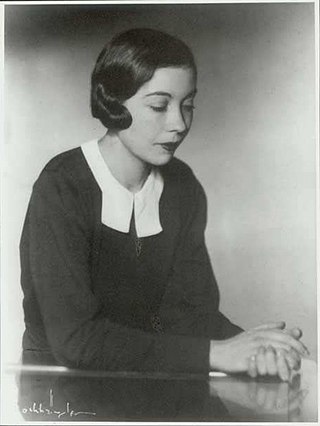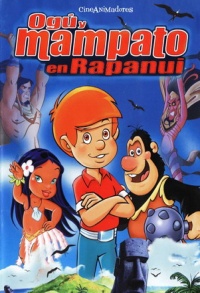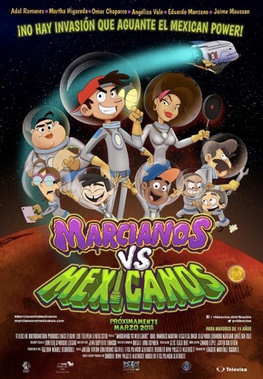
Papelucho is the main character in a series of children's books created by Chilean writer Marcela Paz. Twelve books were published between 1947 and 1974. The series became a classic among books for children in Chile.
Cucalón is a Chilean comics series created by Themo Lobos, containing complete Mampato adventures, as well as other characters and stories.
Themístocles Nazario Lobos Aguirre, better known as Themo Lobos, was a Chilean cartoonist. He created the characters Máximo Chambónez, Ferrilo, Nick Obre, and Alaraco, with his most famous work being Mampato, a character first developed, briefly, by Eduardo Armstrong and Óscar Vega; Lobos then wrote and illustrated his adventures from 1968 to 1978. He was also the publisher of the comic-book Cucalón, which collected all his previous characters and stories.

Marcela Paz was the pen name of Esther Huneeus Ramos Falla Salas de Claro, a Chilean writer. She also used the pen names of Paula de la Sierra, Lukim Retse, P. Neka and Juanita Godoy. She was a recipient of the National Prize for Literature.
Chilean mythology includes the mythology, beliefs and folklore of the Chilean people.

The Hanau epe were a semi-legendary people who are said to have lived in Easter Island, where they came into conflict with another people known as the Hanau momoko or "short-ears". A decisive battle occurred which led to the defeat and extermination of the Hanau epe. According to the legend, these events are supposed to have happened at some point between the 16th and 18th centuries, probably in the late 17th century.
Arif Ali-Shah is a British film writer and screenplay writer. Following in his distinguished family's footsteps, he is also a teacher in the Naqshbandi Sufi mystical tradition.

Ánima Estudios, S.A.P.I. de C.V. is a Mexican animation studio and family entertainment company founded in 2002 by Fernando De Fuentes S. and Jose C. Garcia De Letona, the studio is best known for producing El Chavo Animado, Top Cat: The Movie, the Leyendas franchise, and Cleo & Cuquín.

Ogu and Mampato in Rapa Nui, also known as Mampato: The Movie is a 2002 Chilean animated science fiction adventure film, created by Cine Animadores and executive produced by Elastic Studios, released June 27, 2002. Although the film isn't the first animated feature made in Chile, being the second after Alfredo Serey's 1921 film La Trasmisión del Mando Presidencial, it is considered the country's first "modern" animated film. The movie is based on the Chilean comics character Mampato created in 1971 for the magazine of the same name by Themo Lobos and Eduardo Armstrong, and later reprinted as the comic-book Cucalón, the story for the film being adapted from the seventh adventure in the series: "Mata-ki-te-rangui".
Cine Animadores is a Chilean animation film studio. One of the few full-based animation studios in the country and Latin America, Cine Animadores worked in his first years with TV commercials and later in the final years of the 1990s they started to work on music videos, animated TV series, Flash animation and animated feature films, with the creation of Ogu and Mampato in Rapa Nui, the first modern feature-length animated movie of Chile in 2002.

Diego and Glot is a Chilean animated series created by Claudio Kreutzberger in 2005, with the collaboration of Sebastián Correa and José Tomás Correa of CuboNegro studios, for Canal 13. Diego and Glot is the first hand-draw animation TV series made in Chile since the Condorito shorts in the 1980s. Satirical humor, cultural references and real famous public people of the country is recurrently featured in the show.

Chilean cinema refers to all films produced in Chile or made by Chileans. It had its origins at the start of the 20th century with the first Chilean film screening in 1902 and the first Chilean feature film appearing in 1910. The oldest surviving feature is El Húsar de la Muerte (1925), and the last silent film was Patrullas de Avanzada (1931). The Chilean film industry struggled in the late 1940s and in the 1950s, despite some box-office successes such as El Diamante de Maharajá. The 1960s saw the development of the "New Chilean Cinema", with films like Three Sad Tigers (1968), Jackal of Nahueltoro (1969) and Valparaíso mi amor (1969). After the 1973 military coup, film production was low, with many filmmakers working in exile. It increased after the end of the Pinochet regime in 1989, with occasional critical and/or popular successes such as Johnny cien pesos (1993), Historias de Fútbol (1997) and Gringuito (1998).
The fourth annual Altazor Awards took place on March 24, 2003, at the Centro Cultural Matucana 100.
Hotel Hanga Roa, also known as Hanga Roa Eco Village & Spa, as of 2020 branded as Nayara Hangaroa, is a hotel in Hanga Roa, Easter Island, overlooking the bay on the Avenue Pont. The hotel was used extensively in the 1994 film Rapa Nui. In 1994, the hotel was purchased by the Panamericana hotel firm who extended the property with 10 fake thatched roofed bungalows, nine of which have three rooms. The 60 other rooms are located in the main building. Later, the hotel was acquired by Tanica hotels, owned by the Schliess family from mainland Chile. The Hito family, an extended family from Easter Island, occupied the premises for six months in 2010, claiming ancestral property rights. The hotel closed in 2011 for refurbishment and was projected to include a new museum and theatre, shopping complex, pool, tennis courts and other rooms. The hotel staff were mainly Rapa Nui locals, but the management was not from Easter Island. After a protracted conflict between the Hito family and the Schliess family, an agreement was reached in 2020. Under the agreement, property rights were transferred to the Hito family while the Tanica hotel group retained the right to exploit the hotel for 15 years. In 2020 the Costa Rican Nayara Resort group took control of the marketing.

José Manuel Yáñez Meira de Vasconcellos, better known as Joe Vasconcellos, is a Chilean singer/songwriter and composer of Latin rock, with influences of Latin American fusion and Brazilian popular music. He is the son of a Brazilian diplomat father and a Chilean mother.

The Viña del Mar International Film Festival is a Latin American film festival held annually in Viña del Mar, Chile.

Marcianos vs. Mexicanos is a 2018 Mexican adult animated science fiction comedy film produced, written, and directed by Gabriel Riva Palacio Alatriste and Rodolfo Riva Palacio Alatriste. The film features the voices of Adal Ramones, Martha Higareda, Omar Chaparro, Angélica Vale, Eduardo Manzano, and Jaime Maussan. Produced by Huevocartoon Producciones, it is the company's first original project as it features an entirely human cast and original story, in contrast to the company's previous feature films, and in a similar way to its internet shorts. The film is aimed for a mature audience.
Huevocartoon is a Mexican multimedia entertainment brand founded in November 2001 by Gabriel and Rodolfo Riva Palacio Alatriste, Carlos Zepeda Chehaibar, and Rodolfo Riva Palacio Velasco. It consists of an internet series, six feature films, a video game, a television special, and advertisements, featuring anthropomorphic eggs in a civilized and humorous setting.

Alejandro Edmundo Trejo Zapata is a Chilean theater, television, and voice actor. He is best known for 2001's A Cab for Three, for which he received Best Actor awards at the Cinemanila and Gramado film festivals.

Mampato is a Chilean adventure and science fiction comic strip created by cartoonist Eduardo Armstrong and illustrator Oskar. Since the third installment, the comic has been developed mainly by Themo Lobos. The comic strip follows the adventures of Mampato, a boy who saves a stranded alien named Xsé, and helps Xsé to save his home planet from the invasion of another alien species called the greenies and their cruel leader Mong. Mampato obtains a belt that allows him to travel through time and space. Using this power, Mampato travels through different time periods on Earth. During his travels, Mampato meets the prehistoric caveman Ogú and the 40th-century mutant telepath Rena, who accompany him on his adventures. His adventures are highly educative teaching the readers interesting facts about the time periods Mampato visits.












